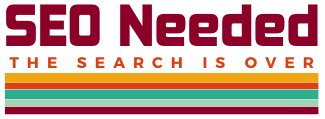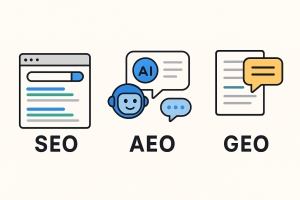Strengths & Main Differences
If online advertising is the name of the game, Google’s Search Engine and Display ads are truly the big enchiladas! The two most important online advertising campaign channels within Google’s motley range. Tuning into the many strengths and benefits of either one —and avoiding the pitfalls— will make all the difference to your marketing team’s efforts.
Search: Strengths
Search ads are pay-per-click advertising with an aim to get your business, brand and products & services found on SERPS, a.k.a., search engine results pages, namely Google’s. This is a massive market, covering in excess of trillions of potential results, so unless you’re a big corporation with millions to spend online, as a small or medium-sized business (SMB) your impact will have to be won on different, probably more creative, applied strategies. Still, as part of the mix, you are going to need to optimize your site for Search. You basically ‘buy in’ on different key words and strings which normally define what your client is looking for in your business. Once that search is punched in by any number of online users, the search will automatically trigger the appearance of your ad in the sponsored search result section. The ad should have potent imaging and/or text to captivate your incoming leads. Clicking on the ad will take the lead to a decision-making or CTA page, thus beginning the purchase process. This type of approach gives you additional benefits:
- automatic visibility for poignant/directed searches
- cost effectiveness on the Results page
- ranking alongside the competition
- marketing campaign granularity
- audience hypertargeting based on location, interests, goals, etc.
- fast campaign efficiency analysis
- data-driven decisions
- marketing-driven revenue
Display: Strengths
Display ads appear, as Search, on the Google Ads interface, but across any number of sites (once you click and access them), rather than on the results page. Customers are presented with the product in the form of a website ad, oftentimes unrelated to anything they might have been looking for or as a brand/business they are unfamiliar with. This may seem counterintuitive, but Google provides a ton of targeting options, from managed placements selected by the advertiser, to website groups based on audience profiles. It’s probably happened to you: you shopped or showed interest even on a specific brand, say Levi Strauss. You start to notice how Levi’s ads (even other denim apparel company ads) begin popping up during your navigation. That’s because Levi’s wants you to not forget about them. That’s Display ads at its most representative. Also, you want to be there when customers/leads/users are just fiddling around. Sometimes, your biggest impact is made not when people have intent, but when they are uncertain of where they are going. It’s the ever-impressive soft push or approach.
Beyond website ads, they can also appear in the form of:
- Text, such as headlines, two lines of text, and a URL; often on sidebars.
- Banners, including images and rich media, such as animations or custom designs
- Gmail, that is, in personal inboxes
- Apps, targeting unique mobile app categories











